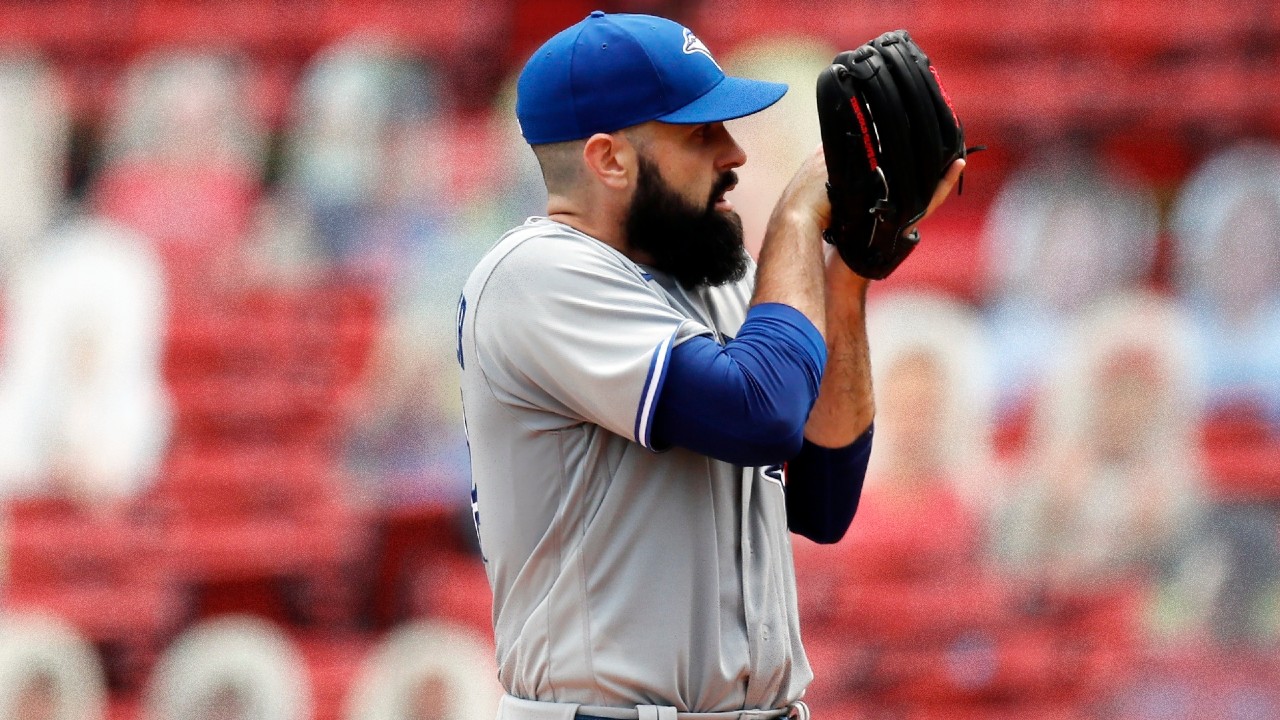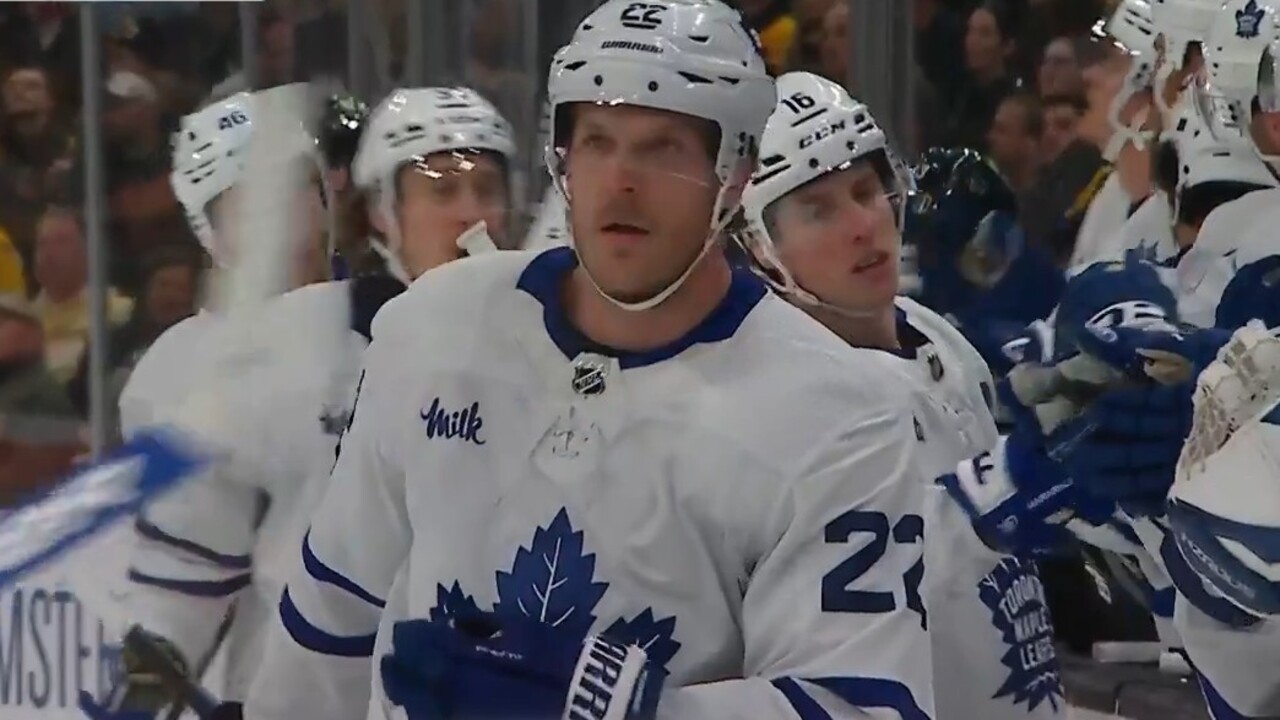
Little of what the Toronto Blue Jays did with their pitching staff this season was conventional.
The club asked starters to cover fewer than half of its innings, seldom letting a pitcher not named Hyun Jin Ryu face a lineup a third time. One-time starters like Thomas Hatch, Anthony Kay, Ryan Borucki and Shun Yamaguchi piggy-backed off current starters, chewing innings in the middle of games with elevated stuff that played up in shorter stints. After Ken Giles was lost to injury, manager Charlie Montoyo went without a defined closer, using his best relievers in the highest leverage spots regardless of which inning those spots occurred in.
It was anything but traditional. And yet, in the end, it helped the club qualify for the postseason with a 32-28 record a year after losing 95 times. So why would you expect the Blue Jays to follow the pack now?
Montoyo confirmed Monday that they won’t, announcing Matt Shoemaker will start Game 1 of this week’s wild card series with the Tampa Bay Rays, followed by Ryu in Game 2 and Taijuan Walker if there’s a Game 3.
“In a three game series, the goal is to win two of them. So, putting our ace in the middle makes sense to us for several reasons,” Montoyo said. “We said we were going to be creative from the beginning – that’s how we got here, being creative. And to beat one of the best teams in baseball, we’re going to have to be creative.”
All three of Toronto’s starters were rested enough to pitch in Game 1, and baseball orthodoxy states that a club ought to start its best pitcher in the first game of a postseason series. That’s unquestionably Ryu, who pitched to a 2.69 ERA over a dozen starts this season, with sparkling peripherals of 9.7 K/9, 2.3 BB/9 and 0.8 HR/9.
But there isn’t much orthodox in playing a three-game, no-days-off, winner-take-all series in the other team’s ballpark. And there isn’t much regard for tradition among Toronto’s decision-makers. The combination of this pitching staff, this series and this front office invited an innovative approach. If you’re surprised, you haven’t been paying attention.
That doesn’t mean it’s not a risk. In the wild card era, teams that win the first game of a postseason series have a 126-49 record. That’s a .720 winning percentage. And you’d expect the odds to be even steeper in a three-game series. Winning the first game is extremely important.
But the Blue Jays are betting that Shoemaker and the club’s bullpen can be good enough to prevail against the Rays on Tuesday, setting up Ryu to start what will be an elimination game either way in Game 2. Assuming he can get deep into his start — Ryu has completed six or more innings in 29 of his past 41 starts — the club’s Game 1 relievers ought to be rested enough to come back for a potential Game 3. And if things turned particularly dire, Montoyo probably wouldn’t hesitate to use them again in Game 2. There are multiple days off between the wild card round and the next. It’s all hands on deck.
And Ryu pitching on five days rest is nothing new. It’s actually his norm. Since the beginning of the 2017 season, Ryu have made 40 of his 80 starts on five days’ rest and has pitched only 21 times on four days. That’s spanning two organizations. Clearly there’s a reason for it, whether it’s Ryu’s personal preference or two separate training staffs relying on objective measures of fatigue and recovery telling them that’s what’s best.
There’s also a slight statistical case for it. This season, Ryu has pitched to a 2.29 ERA in the seven starts he made on five days’ rest, versus a 2.74 mark in his four outings on four days. The sample is certainly small, but you can’t fault the Blue Jays for going with what has worked.
And if there was ever a time to do it, it’s with Ryu coming off his two longest outings of the season. He threw 99 pitches over six innings on Sept. 19 vs. the Philadelphia Phillies and 100 over seven in Toronto’s postseason-clinching victory against the New York Yankees on Thursday.
“When you look at their starters, they all got the extra days off because they clinched before we did,” Montoyo said of the Rays. “So, we’re also giving our ace an extra day off. We’re actually doing the same thing they’re doing. Except our ace is pitching in the second game. And, actually, they’ve got four aces over there.”
Plus, Shoemaker matches up well with the Rays — certainly better than Walker. For his career, Shoemaker has been equally effective against both sides of the platoon, holding right-handers to a .716 OPS and lefties to a .712 OPS. Walker, meanwhile, has been susceptible to lefties so far this season, allowing an .869 OPS against them — versus a .515 OPS when facing right-handers.
Walker’s career-long splits are more even, but still favour left-handers, of which the Rays have several. Of course, Tampa has dangerous hitters from either side of the plate, making them difficult to match up with regardless. But Shoemaker’s career numbers — which is the tip of the iceberg of data clubs rely upon, it must be said — paint a more promising picture for success.
And, for whatever it’s worth, Shoemaker has been effective in three starts against the Rays this season, holding them to six runs on 10 hits with 17 strikeouts and four walks over 15 innings. The Rays hit .192/.250/.404 against Shoemaker in those games.
“We feel good going with Shoemaker in this game,” Montoyo said. “The last time he pitched, he was really sharp. He was throwing 94, 95. And he’s rested now. So, I really feel good about him taking the mound. He’s been one of our best pitchers all year.”
Still, to say Game 1 is Shoemaker’s game is a misnomer. The 34-year-old came off the injured list only a week ago after missing a month due to a lat strain. He has made only one start since — a three-inning, 54-pitch outing against the Yankees. He threw a bullpen on Saturday instead of appearing in another game, and while it’s fair to expect him to be somewhat more stretched out than he was against New York, he won’t be built up to a full starter’s workload.
Does that mean 60 pitches? Maybe 65? We’ll see. But if Shoemaker is still pitching by the fourth or fifth inning, things will have gone extremely well. More likely, he’ll air it out for two or three max-effort frames before turning the game over to an arm out of Toronto’s bullpen.
An obvious candidate for that assignment is Robbie Ray. The big-armed southpaw would match up well with the many left-handed hitters the Rays are likely to stack in their lineup against Shoemaker.
Ray has struck out nearly a third of the lefties he has faced in his career, holding them to a .223/.280/.370 slash line. His command is an obvious concern, but even as he has struggled to find the zone consistently this season, Ray has remained extremely effective against left-handed hitting.
Think about it this way: Shoemaker isn’t starting the game, he’s just … beginning it. If he gets through three innings allowing only a run — as he did last week against the Yankees — he’ll have done his job. Then it’ll be Ray’s turn to throw his hardest, nastiest stuff for two innings or more before passing the baton.
Presumably, the Blue Jays hope that will force Rays manager Kevin Cash to dip into his bench early for pinch-hitters, trying to gain the platoon advantage against Ray once he takes over. If Cash does, he’ll have sacrificed flexibility later in the game, which will allow Montoyo to deploy his bullpen arms with more certainty. If Cash doesn’t, he’ll be allowing Ray to pitch in the best possible position for him to succeed.
Once Ray has done his job, the Blue Jays can play matchups to the finish line. See some dangerous right-handed bats — like Yandy Diaz, Willy Adames, or Randy Arozarena — due up? Here’s Nate Pearson throwing 101 mph or Rafael Dolis spinning splitters that fall right off the table. Staring down a run of lefties — like Brandon Lowe, Ji-Man Choi or Yoshi Tsutsugo — next inning? Enter Ryan Borucki, ready to pound fastballs inside and work cutters away.
At least that’s the design. The best-laid plans of research and development departments often go awry. But it’s a baseball game. Anything can happen. You enter with a strategy, hope it goes well and adapt on the fly if it doesn’t. Whatever the results, the Blue Jays can live with their process. And no one should have expected them to do anything else.






